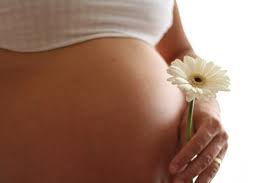Hemorrhoids during pregnancy

It is estimated that at least 30% of pregnant women suffer from hemorrhoids. This is a very high percentage and the causes are to be sought in a plurality of factors that determine the appearance of the problem during the gestation.
In particular, hemorrhoids during pregnancy are mainly related to an increasing of volume of the uterus, which presses on the anorectal veins and bowel causing constipation, and thereby facilitates the appearance of hemorrhoids. Another significant cause demands to be sought in the hormonal changes that accompany pregnancy, which can promote the expansion of hemorrhoids.
A significant increase in estrogen and progesterone, hormones that can affect the appearance of the disease, takes place at the beginning of gestation. The increase of the abdomen pushes on the rectal system and can lead to hemorrhoids inflammation. In the last few months of pregnancy, when the belly grows, the phenomenon can become more problematic, because of uterus enlarging and for the increasing weight, but also for less physical activity done by the woman.
It is, therefore, a combination of factors that contribute to the formation of the problem, and that is also linked to the formation of varicose veins and spider veins. We describe like this the first type of hemorrhoids that can affect pregnant women, even if they have never suffered the problem during their lifetime.
The second case of occurrence of hemorrhoids affects postpartum, rather the birth itself if it is very intense. In the most delicate women, the difficult of birth may lead to hemorrhoids prolapse, which then turn out to external.
Once hemorrhoids causes are clear, it becomes important to cure the problem in an appropriate way, to allow pregnancy go on in a positive way, and to avoid mother to feel pain. We know pregnant women can not take certain medicines, because it could lead to fetus health problems.
How can you treat hemorrhoids during pregnancy?

It is crucial to ask an opinion to the doctor, and then choose to rely on a drug targeted therapy or to prefer natural remedies. The second choice is often revealed as the best, since it minimizes the risks of danger, both during pregnancy and during breastfeeding.
It therefore becomes essential to try to do physical activity to limit constipation, to avoid the onset of thrombosis and then varicose veins appearance. You do not need to grind kilometers, but make some nice walk outdoors at your own speed. This way you can fight constipation and stabilize the body in a simple and natural way.
At the same time, it is important to increase fiber in your daily diet, to regulate the body and avoid episodes of constipation. Eating whole grains and lots of fruits and vegetables fiber helps making the intestines and digestive system more functional, thus to reduce evacuation related pain.
You must also follow special rules in hygiene, if you experience hemorrhoids during pregnancy. The anal washing may be carried out using warm temperature water and acid soap, which accelerates the healing and disinfects the affected area.
Even if it can give an immediate benefit, it is important to avoid cold water or ice water baths or washing, because you could inflame the area and do not get any improvement, or irritate the area because of temperature changes that expand the fragile veins of hemorrhoids.
During pregnancy, it is not possible to rely on corticosteroid preparations, for which new mothers can rely on natural origin oral and topical remedies. Among the many natural remedies proposed by the herbal medicine include the preparations of horse chestnut and marsh mallow, celery plant that naturally alleviate the hemorrhoids problems.
Mallow is a widely used plant for this purpose, so our advice is to consult a good herbalist that can prepare or propose ideal preparations to solve the problem. One last trick involves the intake of berries, especially blueberries and currants, fruits that help to sooth these areas and naturally strengthen vein walls, making them stronger and therefore more prone to healing.




Leave a Reply